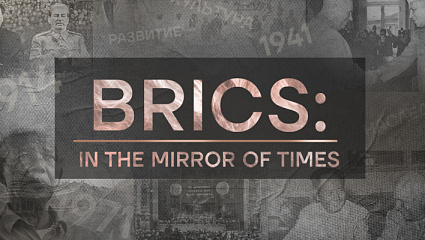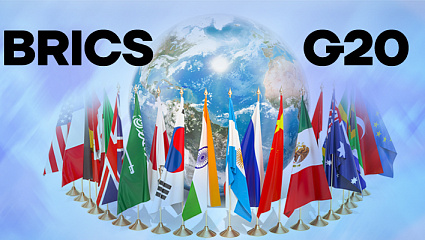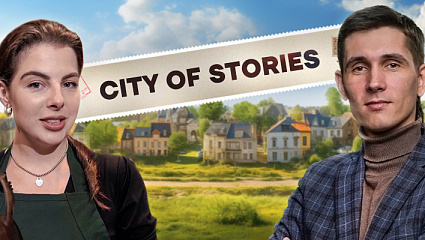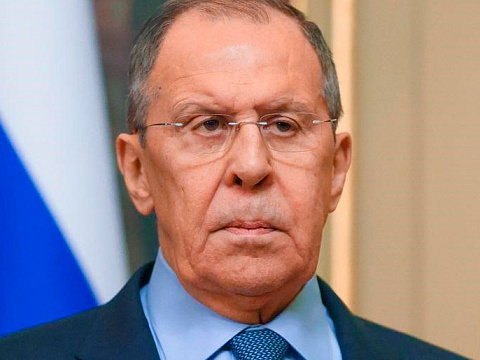Verbilki Porcelain
Oleg Fomin, reporter: "The Gardner Manufactory. Later, the world-known Kuznetsov Factory. Russia’s first private porcelain enterprise. Here, in Verbilki, situated near Moscow, porcelain has been produced for 265 years."
Clay, sand, feldspar and kaolin. These are the components of porcelain production. They are brought to the factory from different Russian regions.
Evgenia Bikbova, Assistant Director of the Porcelain Factory: "This is quartz sand. You see, sand, the standard one, the only thing is that it’s pure, of course. This is pegmatite, this is spar. It comes ground to us. Like this. This is clay, we make things of it. And white clay – kaolin."
Raw materials are poured into a mill and twirled for 12 hours. All components are crushed by means of special uralitic cylinders.
Evgenia Bikbova, Assistant Director of the Porcelain Factory: "These are uralitic cylinders, they different in diameter, so that grinding could be more effective. This is liquid grinding, with water addition, to achieve a certain consistence."
After grinding, porcelain mass goes through some other processing stages. Liquid is removed from it, it is put under a press, and at the end of this process, we get a long sausage like this – a kind of dough for porcelain production. It is easily cut by an ordinary wire.
Then intermediate product goes to the moulding shop. Simple kitchenware is made by machines. All mould operators have to do is examine it. More refined products are made of liquid porcelain dough. It is a so-called method of manual moulding. Liquid is poured into a special form and left there to set.
"This is a mouse – a symbol of the year. Mouse boy. It has set badly, okay, it does not want to be pulled out at all. It should stay there a little more. Let me show it to you like this, here he is, a symbol of the year".
After moulding, the items are furnaced for five hours at a temperature of about 800 degrees. It is necessary to make them strong.
Ivan Kulikov, Chief Heating Engineer: "There are some molding products that can avoid this kilning, but generally, we try to kiln everything like this. If this stage is avoided, physical changes can happen, which will result in defects.
- What products do not undergo furnacing?
- As a rule, figurines, like this one."
After furnacing, products are dipped into glaze.
Maria Kuvychkina, Touristic Director of the Porcelain Factory: "You see that our products have changed their shade, they have parched. Some processes occurred in the furnace at 800 degrees, we restore the color by means of glazing. Glaze is the main component of our porcelain, which makes it stronger. Later, all these things will shine and ring. Our glaze is colourless, transparent, having the same ingredients as the porcelain mass, except sand."
The following production phase is painting. Paints are applied manually on each cup, figurine, plate. The master painter Natalya Katanina has been working at the factory for 40 years. She came here after graduation from an art school.
Natalya Katanina, Painter: "It is interesting to spread beauty among people. That’s why all people sit here and work, to make our life more joyful, more cheerful, and more beautiful. Work has always been interesting, today it is more demanding and maybe of higher quality. We used to specialize in dinnerware sets before, now there are more figurines, dinnerware sets are being made, but they have become more difficult, more interesting."
Igor Kuznetsov, CEO of the Porcelain Factory: "We produce porcelain according to the old recipe, but we keep up to date, we make something new, we improve. The quality of our porcelain has not changed. Our kitchenware, even if you drop a mug, it will not even chip. You pick it up and keep on using this mug."
250 thousand pieces are produced at the factory monthly. Some of them can tell the story of porcelain.
Maria Kuvychkina, Touristic Director of the Porcelain Factory: "The most popular one is a coffee series of our founder Franz Yakovlevich Gardner, a coffee cup. It was designed according to old drawings. We keep both traditions and style. You saw it in the moulding shop, it is moulded manually, we have kept the drawing. A little later, when it was run by Matvei Kuznetsov in 1800, the form became like this, a Kuznetsov cup. It is an original and recognizable drawing."
In 1980s, the factory production was very demanded. More than three thousand people worked here. Today – only about two hundred. However, masters are sure it is possible to give a boost to the development of ancient craft, and more people will fall in love with this beauty.
Oleg Fomin, Kirill Palmovsky, TV BRICS.
Clay, sand, feldspar and kaolin. These are the components of porcelain production. They are brought to the factory from different Russian regions.
Evgenia Bikbova, Assistant Director of the Porcelain Factory: "This is quartz sand. You see, sand, the standard one, the only thing is that it’s pure, of course. This is pegmatite, this is spar. It comes ground to us. Like this. This is clay, we make things of it. And white clay – kaolin."
Raw materials are poured into a mill and twirled for 12 hours. All components are crushed by means of special uralitic cylinders.
Evgenia Bikbova, Assistant Director of the Porcelain Factory: "These are uralitic cylinders, they different in diameter, so that grinding could be more effective. This is liquid grinding, with water addition, to achieve a certain consistence."
After grinding, porcelain mass goes through some other processing stages. Liquid is removed from it, it is put under a press, and at the end of this process, we get a long sausage like this – a kind of dough for porcelain production. It is easily cut by an ordinary wire.
Then intermediate product goes to the moulding shop. Simple kitchenware is made by machines. All mould operators have to do is examine it. More refined products are made of liquid porcelain dough. It is a so-called method of manual moulding. Liquid is poured into a special form and left there to set.
"This is a mouse – a symbol of the year. Mouse boy. It has set badly, okay, it does not want to be pulled out at all. It should stay there a little more. Let me show it to you like this, here he is, a symbol of the year".
After moulding, the items are furnaced for five hours at a temperature of about 800 degrees. It is necessary to make them strong.
Ivan Kulikov, Chief Heating Engineer: "There are some molding products that can avoid this kilning, but generally, we try to kiln everything like this. If this stage is avoided, physical changes can happen, which will result in defects.
- What products do not undergo furnacing?
- As a rule, figurines, like this one."
After furnacing, products are dipped into glaze.
Maria Kuvychkina, Touristic Director of the Porcelain Factory: "You see that our products have changed their shade, they have parched. Some processes occurred in the furnace at 800 degrees, we restore the color by means of glazing. Glaze is the main component of our porcelain, which makes it stronger. Later, all these things will shine and ring. Our glaze is colourless, transparent, having the same ingredients as the porcelain mass, except sand."
The following production phase is painting. Paints are applied manually on each cup, figurine, plate. The master painter Natalya Katanina has been working at the factory for 40 years. She came here after graduation from an art school.
Natalya Katanina, Painter: "It is interesting to spread beauty among people. That’s why all people sit here and work, to make our life more joyful, more cheerful, and more beautiful. Work has always been interesting, today it is more demanding and maybe of higher quality. We used to specialize in dinnerware sets before, now there are more figurines, dinnerware sets are being made, but they have become more difficult, more interesting."
Igor Kuznetsov, CEO of the Porcelain Factory: "We produce porcelain according to the old recipe, but we keep up to date, we make something new, we improve. The quality of our porcelain has not changed. Our kitchenware, even if you drop a mug, it will not even chip. You pick it up and keep on using this mug."
250 thousand pieces are produced at the factory monthly. Some of them can tell the story of porcelain.
Maria Kuvychkina, Touristic Director of the Porcelain Factory: "The most popular one is a coffee series of our founder Franz Yakovlevich Gardner, a coffee cup. It was designed according to old drawings. We keep both traditions and style. You saw it in the moulding shop, it is moulded manually, we have kept the drawing. A little later, when it was run by Matvei Kuznetsov in 1800, the form became like this, a Kuznetsov cup. It is an original and recognizable drawing."
In 1980s, the factory production was very demanded. More than three thousand people worked here. Today – only about two hundred. However, masters are sure it is possible to give a boost to the development of ancient craft, and more people will fall in love with this beauty.
Oleg Fomin, Kirill Palmovsky, TV BRICS.







 DIGITAL WORLD
DIGITAL WORLD


































